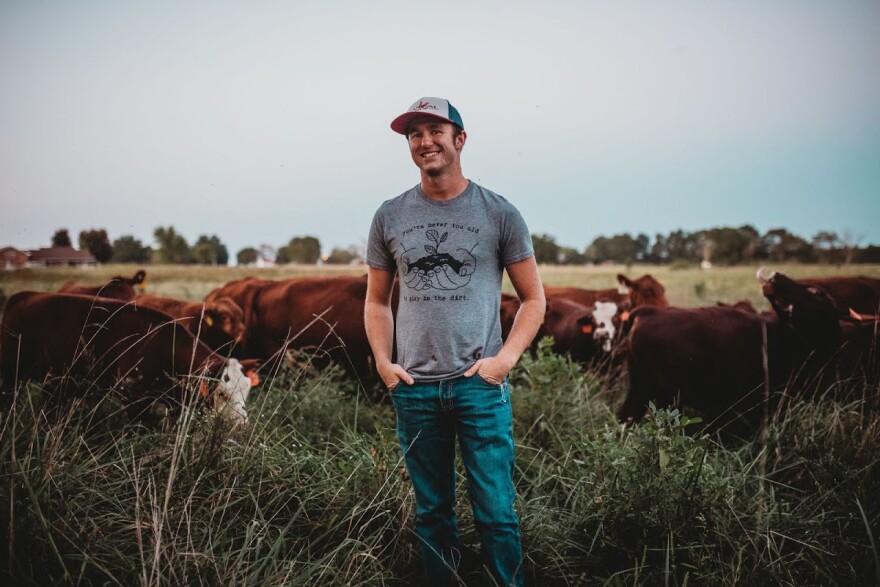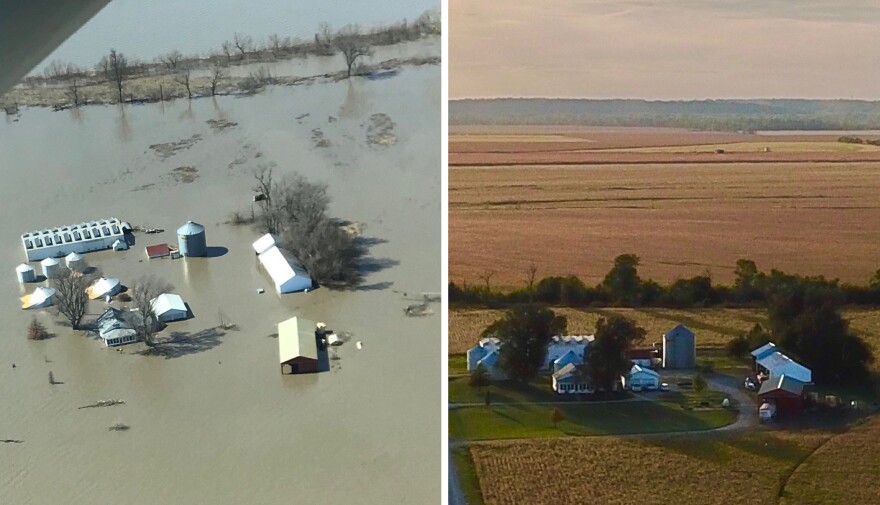Farmers in the Midwest have received tens of billions of dollars in federal crop insurance payouts since 2001, based on an analysis of federal data.
That includes nearly $10 billion to Iowa farmers, $8.5 billion in Illinois and another $5 billion to farmers in Missouri.
The analysis from the Environmental Working Group, an advocacy organization, found that for most Midwestern states, the majority of crop insurance payouts over the past two decades were due to crop damage caused by drought or excess precipitation, conditions exacerbated by climate change.
Some environmentalists and farmers say the federal program, which is heavily subsidized by U.S. taxpayers, discourages growers from adapting to climate change and should be redesigned.
The U.S. Department of Agriculture oversees the program, which pays farmers when their yields or revenues decline. Farmers can claim losses for certain weather-related events, such as drought or flooding, as well as declines in crop prices.
U.S. taxpayers cover about 60% of the cost of policy premiums and may also be responsible for insurance payouts to farmers in the event of widespread crop damage.
The program provides a safety net for U.S. farmers and ensures the “economic stability of agriculture” nationwide, according to the USDA. But it’s doing more harm than good, said Macauley Kincaid, who farms about 880 acres in Jasper, a small community in southwest Missouri. In addition to raising cattle and hogs, Kincaid grows barley, sunflowers and dozens of other specialty crops on his land.

“My grandpa always told me, ‘Never put all your eggs in one basket,’” Kincaid said. “So why as farmers do we only want to raise corn and soybeans? If my corn and soybeans are a complete failure, that’s okay because they might only be one-tenth of my income that year.”
By growing a broader diversity of plants, including cover crops to prevent soil erosion, and moving to no-till practices, Kincaid is working to make his farm more resilient to extreme swings in weather.
Federal crop insurance is a “hindrance” to family farmers, he said, because it discourages them from adapting to environmental change and only insures a small number of commodity crops, like corn and soybeans.
“It actually hurts farmers from trying to be proactive and change their farms,” he said. “They can do the same thing that they've done for years and they're going to get paid for it if they have a failure.”
Using data from the USDA’s Risk Management Agency, the Environmental Working Group tracked yearly crop insurance payouts by county within the Mississippi River Critical Conservation Area, a region that encompasses 13 states from Minnesota to Louisiana.
Missouri farmers received $4.9 billion in crop insurance payouts from 2001 to 2020. The vast majority were due to excess precipitation or drought, each accounting for nearly $1.98 billion, followed by flooding at $411 million.
That mirrored trends in other Midwestern states, including Iowa, Kansas, Oklahoma, North Dakota and Illinois, where at least 60% of all farmer payouts were related to excess precipitation or drought.

Those costs will continue to increase as climate change drives more extreme weather, agricultural economist Anne Schechinger said.
“Because these things like drought and excess moisture are so tied to climate change, as climate change gets worse in the future, crop insurance payments are also going to be growing,” said Schechinger, Midwest Director of the Environmental Working Group.
Other research studies have linked climate change and U.S. crop insurance losses. Climate change-related crop damages were responsible for an estimated $27 billion in federal payouts from 1991 to 2017, according to research from Stanford University.
Still, Schechinger said the federal program does not give farmers an incentive to plan for a changing climate. “It encourages farmers to do what they always do to make money in a year,” she said. “It’s not helping them think about, ‘What if I have a major drought in five years?’”
Rather than subsidizing farms in floodplains and other high-risk areas, the federal government should invest in programs that pay farmers to retire their land permanently and create conservation easements, she said.
“These farms usually are really marginal, so they have low yields and they’re not making that much money for farmers, if any profit at all,” Schechinger said. “It would be really beneficial to take some of this land out of production, for both farmers and the environment.”
Follow Shahla on Twitter: @shahlafarzan
Harvest Public Media reports on food systems, agriculture and rural issues through a collaborative network of NPR stations throughout the Midwest and Plains.


